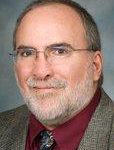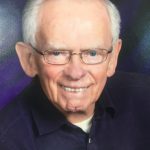Obituaries for October 2019
Kenneth Hess
Kenneth Hess, professor of biostatistics at The University of Texas MD Anderson Cancer Center, passed away July 26. His colleagues remember him as a kind, dedicated biostatistician who was committed to quality and safety.
Hess joined the faculty in the department of patient studies in 1991, then moved to biostatistics in 1994. In addition to his role as a statistician for numerous studies, he served on many committees, notably as the chair of the Data Safety Monitoring Board (DSMB), where he led the review of clinical trial protocols to ensure patient safety and data integrity.
Coworkers recall his advocacy for patient and animal safety and high-quality science.
“He had so much knowledge, and he wanted to share it, to help find ways to make our studies be the best they could be, be more efficient,” shares Kimberly Hebenstreit, a senior research quality coordinator in human subjects protection who served as DSMB coordinator for seven years while Hess was chair. “I learned so much from him about how to do the right thing and conduct scientific research correctly.”
“The quality of work was very important to him,” agrees Marcy Johnson, director of quantitative research in biostatistics. “He was always challenging the status quo because he wanted the best for our patients and researchers.”
Hess was also known for being supportive of all those around him, especially the statistical analysts who he worked with often. Many of them recall him having their backs in regards to their work, and they appreciated how his door was always open.
“He genuinely wanted to help others,” Johnson notes. “There was no such thing as a stupid question to him.”
Those who worked with Hess know how much of an impact he had on MD Anderson’s research programs.
“He was really good at his craft and was a dedicated statistician,” says David Hong, medical doctor and professor of investigational cancer therapeutics. “But he was also a good friend and colleague who didn’t need the limelight. He just really desired to make the best contribution he could to cancer research.”
Hebenstreit agrees. “He was a hidden gem. He flew under the radar for a lot of people, but he was such a hard worker for quality improvement in our trials.”
Nationally, Hess served as a member of the American Joint Committee on Cancer (AJCC), a member of the Melanoma Expert Panel, a member of the AJCC Precision Medicine Core, and chair of the AJCC Evidence-Based Medicine and Statistics Core, in which he had an impact on the eighth edition of AJCC Cancer Staging.
Hess was elected a fellow of the American Statistical Association in 2017.
“He made seminal contribution in hazard function estimation and model diagnostic for time-to-event data,” notes J. Jack Lee, professor of biostatistics. “He also provided exemplary leadership as a statistical ambassador to the biomedical research community.”
Kim-Anh Do, department chair of biostatistics, also recalls his influence on students and trainees, both as a formal instructor within the MD Anderson Cancer Center UTHealth Graduate School of Biomedical Sciences and informal mentor to researchers outside the quantitative sciences.
“His teaching philosophy for biostatistics included imparting the importance of understanding the subject matter and exploring as many different large data sets as possible. He focused on visualization, while developing an awareness and understanding of assumptions,” she says. “His humble demeanor and witty sense of humor endeared him to all collaborators and colleagues.”
Outside of work, Hess was known for being a dedicated husband and father and an avid fisherman.
“We connected at a junior faculty retreat over a love of fishing,” says Hong. “He took me on my first saltwater fishing trip in Surfside.”
They continued fishing together for many summers, including Hess’s final trip on July 4, when he caught the Texas triple slam of fish: redfish, flounder, and speckled trout.
“You really get to know someone on long fishing trips,” says Hong. “As a colleague, he was brilliant in how he approached problems, and I learned a lot from him as a collaborator. But more than that, he was an incredible person and a really good friend.”
Marc Moore
Submitted by Christian Genest, McGill University
Canadian statistician Marc Moore passed away July 26, 2019, after losing a long battle with Parkinson’s disease. He was 77. A graduate of Université de Montréal, Canada, Marc was a professor at École polytechnique de Montréal from 1971 until his retirement at the end of 2002. He was chair of the applied mathematics department for six years in addition to teaching probability and statistics to several generations of engineers.
Marc’s research interests included spatial statistics, pattern reconstruction, and iceberg trajectory modeling. He authored or coauthored nearly 30 research papers in international journals and a popular probability textbook (in French). He also edited two research monographs. His expertise was highly valued and sought by many. During his career, he supervised 15 graduate students and served on, among others, Statistics Canada’s Advisory Committee on Methodology (1985–1988).
Marc had an extensive record of editorial and community service. He was editor-in-chief of The Canadian Journal of Statistics (1989–1991) and president of the Statistical Society of Canada (SSC) in 1995–1996. He joined the ASA in 1984 and was a member of the COPSS Presidents’ Award Committee from 1990–1995, serving as chair in 1992–1993. He was an elected member of the International Statistical Institute since 1986, recipient of the SSC Distinguished Service Award in 1994, and an honorary member of the SSC since 2003.
Marc was a kind, modest, and generous man with a keen sense of duty and justice. He was also an enduringly supportive mentor for younger colleagues and an inspiration for many French-Canadian statisticians who followed in his tracks. After retiring at the age of 60, he had a successful second career as a talented cabinetmaker. He will be sorely missed. He is survived by his wife, Monique, whom he married in 1966; their sons, François and Benoît; and four grandchildren.
Raymond Leigh Wilder
Raymond Leigh Wilder passed away at his home surrounded by friends and family on August 21.
Born August 19, 1927, in Tacoma, Washington, Raymond’s family moved to Portland, Oregon, when he was 19. He graduated from Grant Hi in Portland and spent three years in the Pacific as a Navy destroyer fire controlman. He followed his stint in the Navy with a bachelor’s in mathematics at Oregon State in 1952, eventually earning his master’s in quantitative business analysis. He formed Wilder Associates in 1974 as a statistical and engineering consultant with clients that included McDonnel Douglas, the University of Southern California, and Lundberg Associates until he retired in 1982.
Wilder was a member of DeMolay in high school and president of the Chi Phi and Student Athletic Managers Association at Oregon State. A member of the American Statistical Association, he also served on the Waldport Schools Advisory Committee, Oregon Land Conservation Development Commission, and endowment committee for the Oregon Coast Commission for the Arts. He published his book on qualitative technique, Rating For Reliability Allocation, which was used for management decisions, paints, textile and packaging development, vendor and personnel development, athletic ratings, and quality level selection.
Wilder married Alois DenBeste and had two children, Leslie Ann and Michael Jon Wilder. He married Marion Coes in 1972. Both Alois and Marion preceded him in death. He then married Janice Epps James in 2000.




















